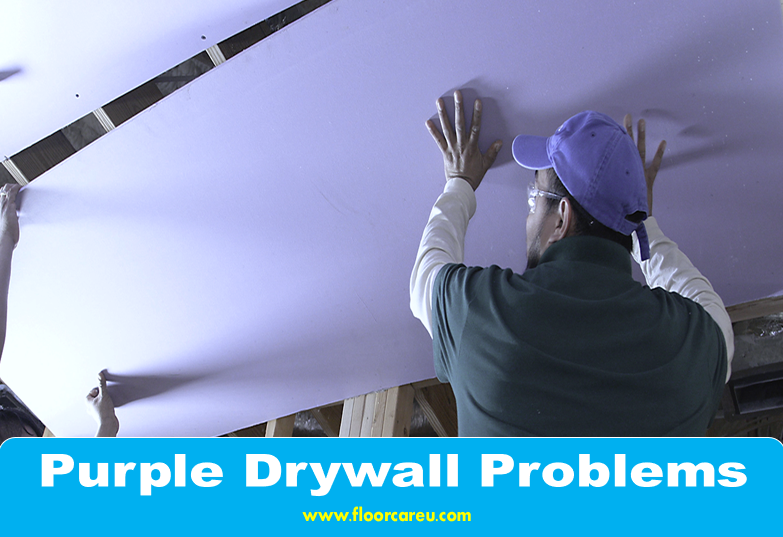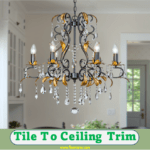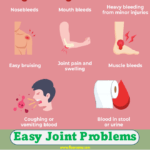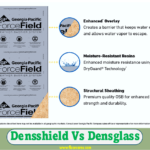Purple Drywall Problems: Purple drywall, known for its moisture and mold resistance, offers superior protection against mold, mildew, and moisture compared to traditional drywall. Additionally, it provides added benefits such as resistance to scratches, scuffs, dents, and noise, making it a popular choice for moisture-prone areas like bathrooms and kitchens.
Purple drywall, manufactured by Gold Bond Building Products, is designed to resist moisture, mold, and mildew, making it an ideal option for areas prone to high humidity and water exposure. Its additional benefits include resistance to scratches, scuffs, dents, and noise, providing a durable and protective solution for interior walls and ceilings.
Homeowners and contractors often opt for purple drywall for areas requiring enhanced moisture protection, such as bathrooms and kitchens. However, it’s important to understand the limitations of purple drywall and how to use and maintain it effectively for long-term durability and performance.

Common Issues With Purple Drywall
Due to its high moisture resistance, Purple Drywall can encounter issues such as paint puddling. It may not absorb paint like regular drywall, leading to potential cosmetic problems. Additionally, improper installation or exposure to excessive water can compromise its performance over time.
Moisture Problems
Purple drywall is prone to moisture-related issues, especially in high-humidity areas like bathrooms and kitchens. Purple drywall can degrade when exposed to excessive moisture, such as from leaks or condensation, leading to structural instability and compromising its integrity.
Mold And Mildew Growth
Due to its moisture-resistant properties, purple drywall is less susceptible to mold and mildew growth compared to regular drywall. However, if not properly installed or the moisture barrier is compromised, mold and mildew can still develop on the surface or within the wall cavity, posing health risks and necessitating costly remediation.
Fixing Purple Drywall Problems
Purple drywall, known for its moisture and mold resistance, can still face issues requiring prompt attention.
Repairing Moisture Damage
If moisture damage occurs, it’s crucial to identify the source and address any leaks immediately. Remove the affected drywall, dry the area thoroughly, and replace it with new purple drywall.
Addressing Mold And Mildew Issues
To tackle mold and mildew problems, clean the affected area with a mixture of water and bleach. Ensure proper ventilation and consider installing a dehumidifier to prevent future growth.
Preventing Future Problems
Avoid future purple drywall problems by choosing moisture, mold, and mildew-resistant PURPLE drywall products. With added advantages like scratch, scuff, and noise resistance, PURPLE drywall ensures durable and reliable solutions for your construction needs. Trust PURPLE drywall to safeguard against potential issues.
Proper Installation Techniques
Proper installation techniques are crucial to prevent future problems with purple drywall. Here are a few key steps to ensure a successful installation:
- Prepare the surface: Before installing purple drywall, make sure the surface is clean, dry, and free from debris or contaminants. This will help the drywall adhere properly and prevent any future issues.
- Use the right fasteners: Use screws specifically designed for drywall installation to secure the panels in place. Nails or inadequate fasteners can cause problems such as loose panels or cracking.
- Seal the seams: Apply a thin layer of joint compound to the seams between the drywall panels and reinforce the joints with drywall tape. This will help prevent cracks and ensure a smooth finish.
- Properly finish the surface: After the joint compound has dried, sand the surface to achieve a smooth finish. If necessary, apply additional coats of joint compound and sand between each coat.
- Primer and paint: Apply a coat of primer to seal the drywall and provide a good base for the paint. Choose a high-quality paint formulated for drywall to ensure long-lasting protection and a professional look.
Maintenance Tips For Longevity
To ensure the longevity of purple drywall and prevent future problems, it is essential to follow these maintenance tips:
- Monitor humidity levels: Excess moisture can lead to mold and mildew growth, damaging drywall. Use a dehumidifier or proper ventilation in moisture-prone areas such as bathrooms or basements.
- Address leaks promptly: If you notice any signs of water damage or leaks, address them immediately. Repair any leaks, replace damaged drywall, and ensure the affected area is properly dried to prevent further issues.
- Avoid excessive weights: Purple drywall is durable, but it is important to avoid hanging excessive weights or heavy objects directly on the walls. Use appropriate wall anchors or consider additional structural support if needed.
- Regular inspections: Periodically inspect your purple drywall for any signs of damage, such as cracks, dents, or bulging. Address any issues as soon as possible to prevent further deterioration.
- Keep the surface clean: Regularly clean your drywall using a gentle cleaner and a soft cloth or sponge. Avoid abrasive materials or harsh chemicals that can damage the drywall surface.
Comparison With Other Drywall Types
When choosing the right drywall for wet areas in your home, it’s important to consider the pros and cons of different options. In this section, we will compare purple drywalls with greenboard, focusing on their effectiveness in wet areas.
Purple Drywall Vs. Greenboard
Purple drywall, manufactured by Gold Bond Building Products, offers superior moisture, mold, and mildew resistance. It is specially designed to combat moisture-related issues, making it an ideal choice for areas with high humidity or potential water exposure.
On the other hand, greenboard is a type of drywall that provides some moisture resistance. It is coated with a water-resistant green paper covering, which helps to protect against mildew and moisture damage. However, it is important to note that the greenboard is not completely waterproof and should not be used in direct contact with water or areas prone to frequent water exposure.
| Purple Drywall | Greenboard |
|---|---|
| Superior moisture, mold, and mildew resistance | Offers some level of moisture resistance |
| Scratch, scuff, dent, and noise resistance | Protects against mildew and moisture damage |
Effectiveness In Wet Areas
Purple drywall is the preferred choice when it comes to wet areas such as bathrooms, showers, or basements. Its enhanced moisture resistance properties make it more reliable and less prone to water damage than Greenboard. While greenboard can withstand areas exposed to water for a limited time, it is not recommended for long-term exposure or direct contact with water.
- Purple drywall is ideal for showers and bathrooms, where water exposure is common.
- Greenboard can be used in areas with high humidity or occasional moisture but should not be used in direct contact with water.
In summary, purple drywall offers superior moisture, mold, mildew resistance, and other added benefits such as scratch, scuff, dent, and noise resistance. While greenboard provides some moisture resistance, it is unsuitable for areas with direct water exposure or long-term moisture issues. Choosing the right type of drywall is important based on the specific requirements of your wet areas to ensure long-lasting durability and protection against moisture-related problems.

Frequently Asked Questions Of Purple Drywall Problems
Is Purple Drywall Worth It?
Purple drywall is worth it due to its superior resistance to moisture, mold, and mildew. It also offers added benefits, such as resistance to scratches, scuffs, dents, and noise.
Can Mold Grow On Purple Drywall?
Mold cannot grow on purple drywall because it is resistant to moisture, mold, and mildew.
Can I Use Purple Drywall In the Shower?
No, you cannot use purple drywall in the shower. It is not suitable for wet areas. The best waterproofing method would be to use a cement board covered with tile or plastic. Moisture-resistant drywall like green or purple can be used underneath a properly installed plastic shower.
Is Purple Board Waterproof?
The purple board is water-resistant, not waterproof. It can withstand water exposure but may get damaged with prolonged direct contact.
Can Mold Grow On Purple Drywall?
Purple drywall is moisture, mold, and mildew resistant, offering superior protection against growth.
Can Purple Drywall Be Used In Showers?
Drywall is unsuitable for wet areas; use a cement board covered with waterproofing materials.
Conclusion
Experience the benefits of moisture—and mold-resistant PURPLE drywall for enhanced durability and protection. With this superior solution, say goodbye to worries about scratches, scuffs, dents, and noise. Invest in quality construction with PURPLE drywall products for a reliable, long-lasting finish.
Feel secure with PURPLE drywall’s unmatched performance.


